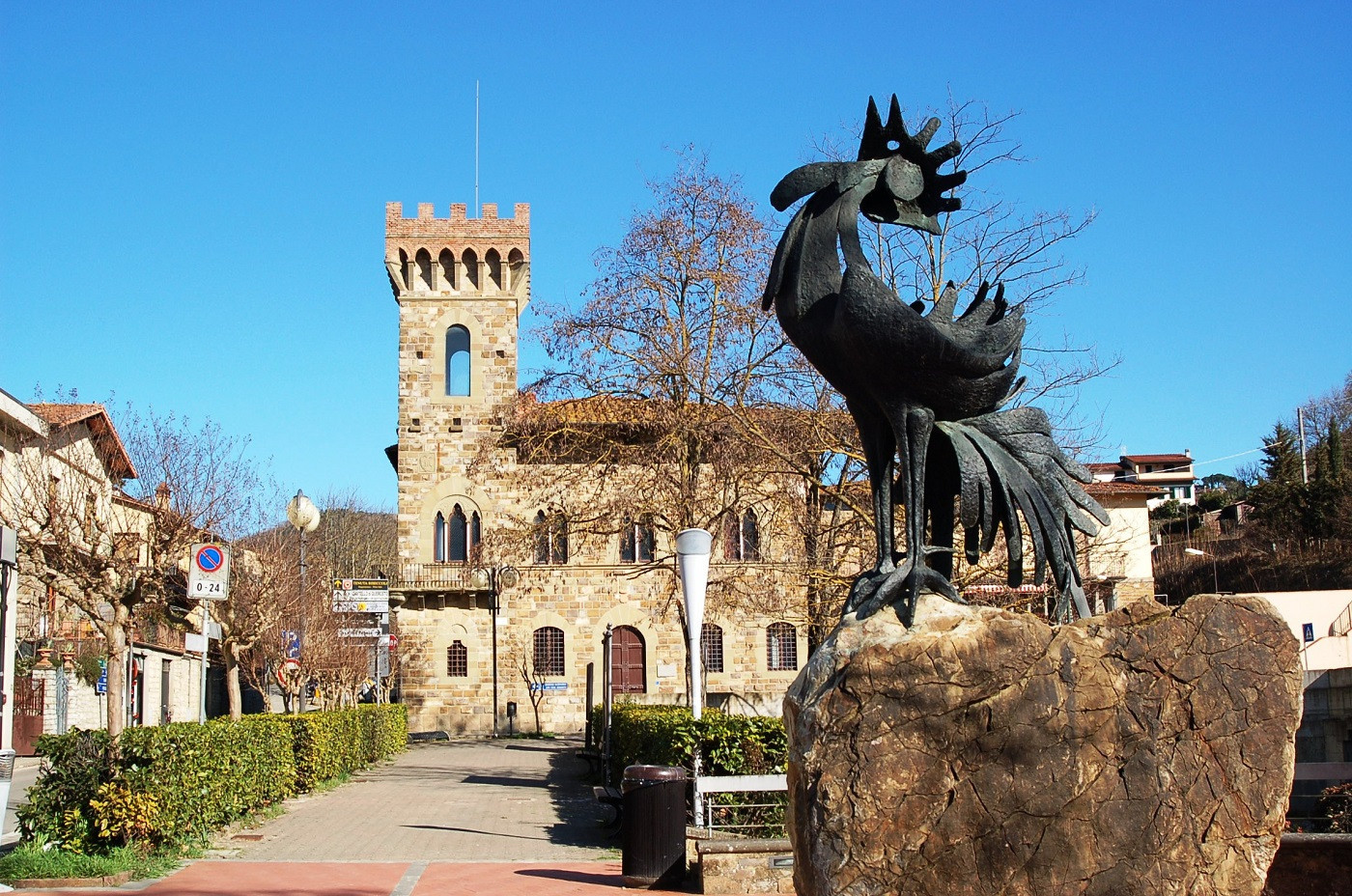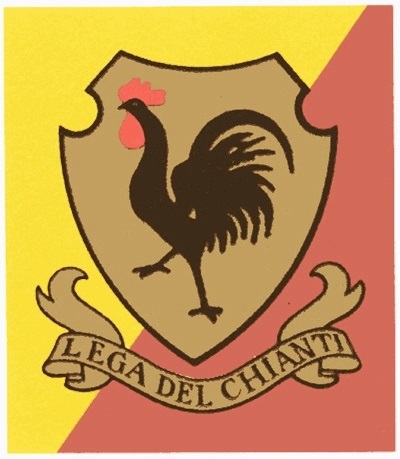
The Chianti Classico Wine and its Black Rooster: a 600-year-old “logo”
Every company, every organization can’t do without a
logo, a symbol to be recognized immediately, placed on products, websites,
letterheads, documents, advertising, labels, wherever possible. It has
a strong evocative and commercial power and companies often invest heavily in
this graphic representation to which an important industrial design sector is
dedicated.
The Black Rooster is the "logo" of the
most famous Tuscan wine and you can find it on all the bottles of the producers,
about 350, that are part of the Chianti Classico Consortium. One of the oldest
professional commercial brands with an interesting history.
The symbol was born
as the coat of arms of the Lega del Chianti, a political-military league
created by the Florentine Republic in 1384 to defend the borders against Siena,
including the current municipalities of Castellina, Gaiole and Radda. If you look up in the
Salone dei Cinquecento in Palazzo Vecchio, headquarters of Tuscan councils and
public meetings, you'll see the 16th century wooden ceiling tiles each representing a Tuscany
district. Giorgio Vasari painted the black rooster on the Chianti tile, on a
shield next to the figure of Bacchus, god of wine, to underline the
relationship between that area and the wine.
In 1716 a law of the Grand Duke Cosimo III dei
Medici established that only the wines produced in Castellina, Gaiole and Radda
and part of Greve (almost all of today's Chianti Classico territory) - back then
already renowned for their quality - could be called "Wines of Chianti". In 1924 the Consortium for the defense of Chianti Wine was founded in
Radda, within the boundaries established in 1716. The old symbol of the Chianti
League of 1384, a black rooster on a gold field, was adopted as the “logo”.
Finally, in 1932, with a ministerial decree, Chianti wine became
"Classico", to distinguish the ancient area of origin from other
areas.
In 1984 our wine becomes DOCG (Denomination of Controlled and Guaranteed
Origin) and in 1996, autonomous DOCG with a production disciplinary
different from that of other Tuscan wines. Since 2005, the Gallo Nero logo must
be also present on every bottle of Classico and since 2007 there must also be
an identification number that allows, via internet, to easily trace the
producer. A long way for this wine and its black rooster!
But
why in 1384 was the black rooster chosen as the emblem of the League and
therefore as the future "logo" of the Classico? It was probably due to its
bold and warrior nature and the peasant belief that the crowing of the
rooster at dawn chased the evil night spirits away. We should also mention the
legend, though of dubious origin.
In the Middle
Ages Siena and Florence were fighting to conquer the Chianti territory. Eventually, to avoid further bloodshed, they decided to set the border in the place where two
knights would meet after leaving at dawn - one from Siena and one from Florence - at
the crowing of the rooster. The Sienese gave their rooster a lot to eat to make
it crow louder, but the Florentines made it fast. In this way the black
Florentine rooster, terribly hungry, began to crow in protest when it was still
dark, while the white Sienese rooster, belly stuffed with food, was still sleeping
heavily. The Florentine knight heard the rooster crowing and set off at a
gallop, while the Sienese kight was still waiting for the bird to wake up. The knights ended up meeting at the Castle of Fonterutoli, a few kilometers from Siena, where the border
was set.
Almost all of Chianti territory therefore became
Florentine thanks to the hungry black rooster, which consequently became the
League symbol.
Photo above: Monument to the
black rooster in via Cesare Battisti, Greve in Chianti.
Logo on the town hall behind
the sculpture by Igor Mitoraj "Winged Torso" (2002) in Piazza
Matteotti, Greve in Chianti.

Coat of arms of the Chianti League of 1384, basis of
our "logo".



